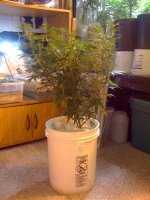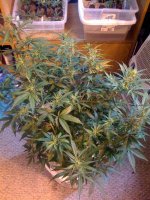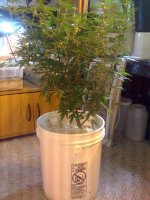yes. though coco holds more water than bark.Another question peeps, so if orchid bark and pumice are good for rooting, would coco chips/pumice be about the same? And why pumice and not something else?
You guys rock!
smaller bark for clones, larger pieces after transplanting into large container.
maybe 50/50-30/70 coco/pumice mix.
pumice is essentially bigger perlite. they can also be mixed together.
w/ pores like lava, w/out sediment build-up of lava.
up to 3/4" rocks that replace hydroton, lava, etc...
no compaction, like small perlite can do become.
can also be used @ 100% if watering daily-every 2 days. inert, excellent drainage. > coins...
good to surround plant in new container after transplanting... permits large & prfuse roots growth - unrestricted by densely packed media...
look into medias used by orchid growers... they like lots of drainage; as seems to be what some plants
chemical and physical characteristics of pumice as a growing medium
http://www.actahort.org/members/showpdf?booknrarnr=401_9
enjoy your garden!Pumice is a volcanic rock imported from Iceland for Dutch horticultural use. It is a natural product and available in big quantities. Pumice is used as substrate for fruit vegetables (tomato, cucumber, pepper) as wel for cut flowers. The interest in growing plants in pumice is increasing, because it requires relatively low investments and is easily applicable in existing growing systems. Pumice can be used for many years, so it results in little substrate waste. These factors represent minimal annual expenses. In addition, pumice is friendly to the environment, because no harmful production processes are involved.





